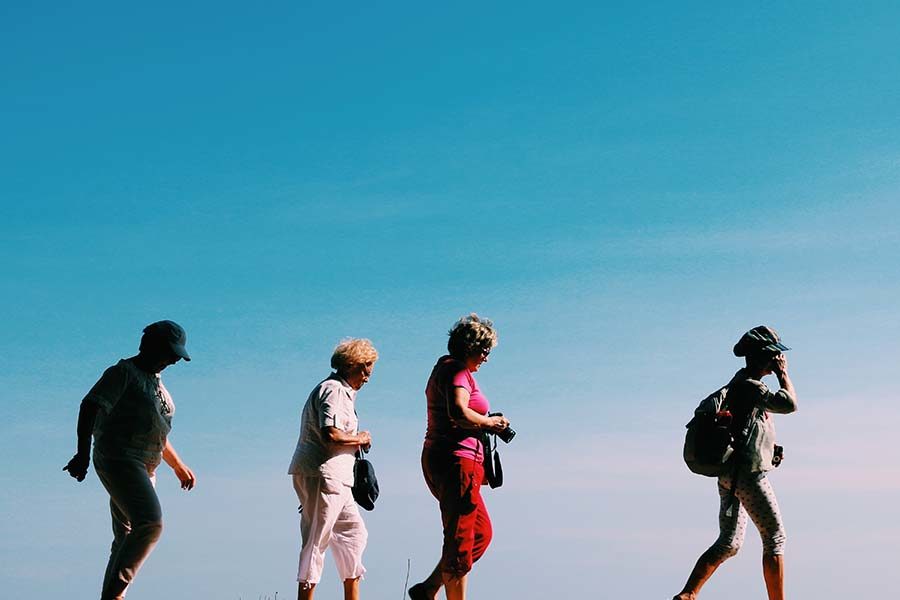Prescribe a run in the park for better health

DATE
TYPE Prevention Centre News
I remember the first time I turned up to a parkrun in Sydney in 2014, with butterflies in my stomach. A colleague had persuaded me to go along to one of the weekly 5km community runs in open, green spaces – but, even as a regular jogger, I was nervous I would come last.
I needn’t have worried. Alongside the clearly “serious” runners were people of all shapes and sizes, ages, parents running with prams, dogs and plenty of children. A good number of people also chose to walk the 5km too. What they all had in common was that they were out on a Saturday morning, exercising in the Sydney sunshine.
parkrun is an international community-led phenomenon where communities walk and run together in green outdoor spaces. Since it was launched in 2004 in London, it has grown into one of the world’s largest and most successful physical activity interventions, and more than four million people have participated in 22 countries. There are few other interventions worldwide that match it in terms of scalability, sustainability and accessibility.
It is a good reminder for those of us working to prevent chronic disease that prevention happens in many different settings outside of health – and how community-based events and active living programs can help in our work to create a healthier community.
parkrun calls itself a social intervention, but the evidence on the health benefits is starting to stack up. My colleagues and I recently conducted a review of parkrun literature for evidence of its reach, health impact and appeal. We found that it not only encouraged increased levels of physical activity, especially among those were not previously active, but that participants’ wellbeing increased, with reductions in depression, anxiety and stress, and increased happiness and confidence.
This volunteer-run community-based event prides itself on its ethos of inclusivity and actively works to attract those who need to move more. It’s one of the only sporting events I know that celebrates the average finish time growing longer, as more non-athletes sign up.
It also provides opportunities for genuine community connection. It’s enjoyable to be running in open, green spaces – and the vigorous exercise increases the sense of satisfaction and wellbeing at the end. Through my continued participation, I have made many friends in my community, and the runs have become such an important part of our lives that a small group of us continued to run throughout the COVID restrictions.
Based on my research and my personal experiences, I think the success of parkrun offers a few lessons for those of us working in health.
First, it is a good real-world illustration of the physical, mental and social co-benefits that are possible through preventive health activities. We often talk about prevention of obesity and chronic disease in terms of increased taxes and regulation, and there is less public support for interventions like parkrun than for some other measures. Perhaps this is a story that we in public health could tell better.
Second, parkrun is not a traditional health intervention; it was started by members of the public who wanted to come together to exercise after one of them was injured. But its health benefits now mean it is being prescribed by GPs in the UK. It shows that effective and impactful interventions can come from the community and expand organically – and we as researchers can learn much from their success.
Lastly, it highlights the importance of providing environments that are conducive to physical activity. Places and supportive environments are crucial to better mental and physical health; we need to look at the system around people when we encourage them to exercise more.
Australia’s population is concentrated on the continent’s fringes, and there are calls for greater density in our cities. This can threaten the likelihood for an area to host a parkun, as one of the rules is that the course cannot cross a road. It is critical that we ensure that large contiguous green space is maintained, especially in urban and disadvantaged areas, to support such initiatives.
parkrun works because it’s accessible, there is no pressure, it’s regular, people can choose whether or not to show up, it’s free, and it happens in green spaces. It’s exactly the sort of intervention we should be considering when extending the reach of prevention to hard-to-reach groups.
I would encourage everyone to have go. Oh – and don’t worry about your performance. There is always a volunteer tail walker, so it’s impossible to come last.



